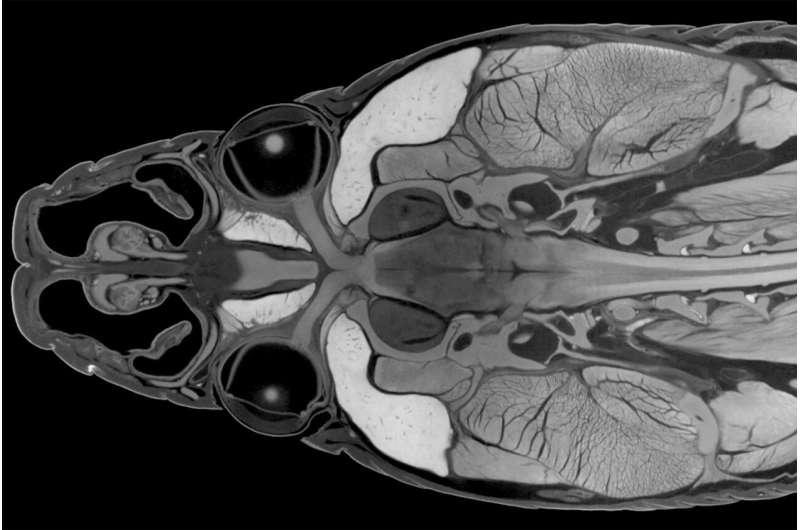
Reading about the latest scientific discovery—such as the unearthing of a fossil representing a new species of tiny dinosaur—can be fascinating. But what if it were possible to do more than just read about it? What if you could go online, download a digital model, and 3D print an exact replica of that fossil within minutes of reading the news?
That is the goal of the Non-Clinical Tomography Users Research Network, or NoCTURN, an international group of researchers spearheaded by theUniversity of Arizona Health Sciences, the American Museum of Natural History, the University of Florida and the University of Texas. They want to open the doors of science and let everyone in.
The development of NoCTURN was detailed in a recent paper by Gignac and colleagues, "The role of networks to overcome large-scale challenges in tomography: The non-clinical tomography users research network," published in the journal Tomography of Materials and Structures.
"There are a lot of datasets available in various research repositories, but there are easily hundreds of thousands more on the hard drives and servers of all of the people who are funded by federal governments to do computed tomography research around the world, so only a small fraction are available to the public," said Paul Gignac, Ph.D., who is on the NoCTURN leadership team and is an associate professor of cellular and molecular medicine at the UArizona College of Medicine–Tucson.
"We'd like to see that availability expand tenfold as it becomes more commonplace and expected that researchers and imaging facilities share these data in public repositories."
Computed tomography, commonly referred to as CT scanning in the medical field, has transformed science across many disciplines by allowing for the nondestructive 3D imaging of complex, opaque objects. Whether studying organismal biology, manufacturing techniques, experimental medical devices, engineering structures, geological samples, prehistoric artifacts or fossilized organisms, CT is a core element in science, technology, engineering and mathematics research and outreach toolkits.
Computed tomography's relative newness as a scientific tool—the first CT scanner is just over 50 years old—and its quick ride to popularity have resulted in a fractured CT landscape.
"There are dozens of manufacturers of high-resolution CT scanners, but few standards between them," Gignac said. "When I explain how I did a scan to one of my colleagues, we might not even be using the same language because the terminology for the same parameters isn't identical. I can send my colleague some files, but he or she may not be able to open them with their software because some file types are proprietary. Through NoCTURN, we are trying to smooth out those kinds of interoperability issues."
NoCTURN, a National Science Foundation Research Coordination Network, is a collaboration of 75 researchers from 42 institutions around the world with the common goal of improving data handling across scientific disciplines. The group was formed in 2022 just as the U.S. Office of Science and Technology Policy released the Nelson Memorandum, which updated policy guidance to promote equity and transparency in research and improve public access to federally funded research results.
More information: Paul M. Gignac et al, The role of networks to overcome large-scale challenges in tomography: The non-clinical tomography users research network, Tomography of Materials and Structures (2024). DOI: 10.1016/j.tmater.2024.100031
Citation: Research team uses CT network to promote public access to open science (2024, May 22) retrieved 10 June 2024 from https://techxplore.com/news/2024-05-team-ct-network-access-science.html
This document is subject to copyright. Apart from any fair dealing for the purpose of private study or research, no part may be reproduced without the written permission. The content is provided for information purposes only.
